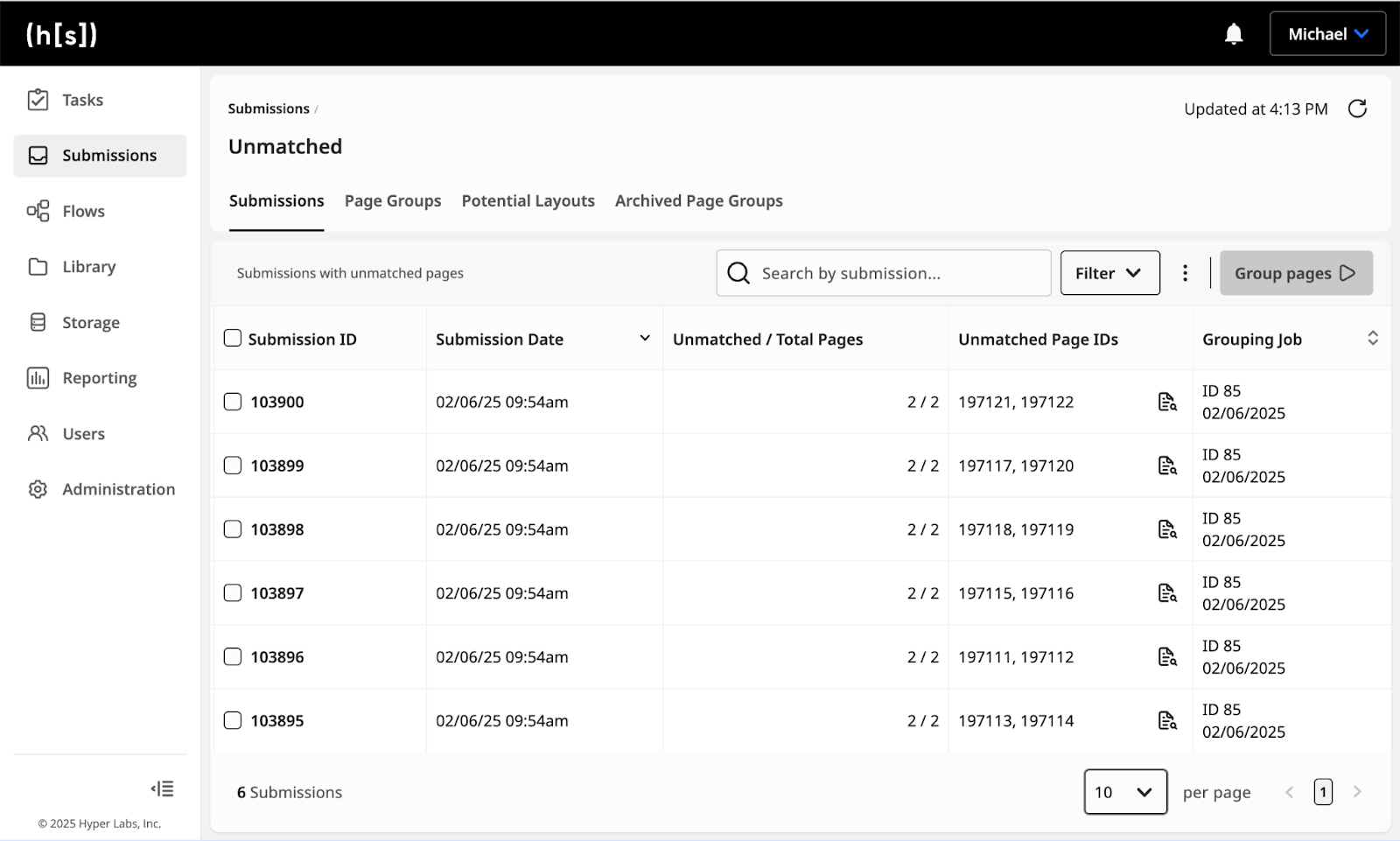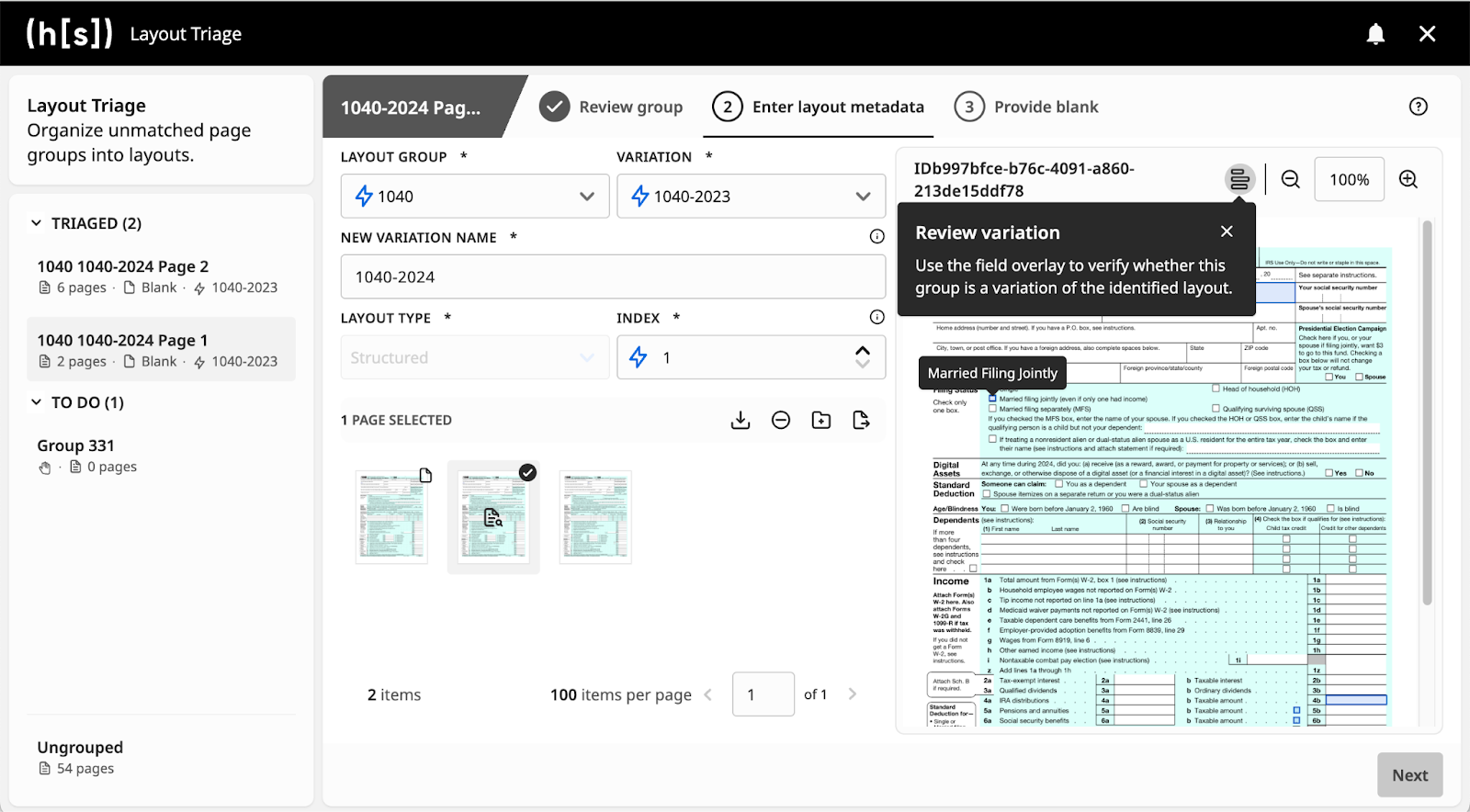In the ever-evolving landscape of document processing, businesses often grapple with changes in the structured documents they receive from users over time, referred to as document drift. Financial institutions might handle new IRS tax forms each year, while health insurance providers deal with revised medical forms. Such changes are beyond an organization’s control and can reduce their automation rates over time. Manually identifying and creating new layouts for these documents is a tedious and error-prone task.
The Hyperscience Advantage: AI-Assisted Layout Creation
Recognizing these challenges, Hyperscience offers a groundbreaking solution that integrates artificial intelligence with human input through AI-assisted layout creation. This innovative approach not only automates the time-consuming aspects of document processing but also enables humans to effectively manage and create layouts, providing a harmonious blend of AI’s efficiency with strategic human oversight.
It’s important to emphasize that, while this feature focuses on computer vision based structured documents and layouts, Hyperscience also excels in processing unstructured and semi-structured documents, where data types are consistent but field locations vary, and unstructured documents like text-heavy contracts, legal forms, papers or emails. Our platform employs advanced AI and machine learning to intelligently manage document variations, freeing businesses from the constraints of traditional rules-based systems.
Leveraging Cutting-edge AI to Address Long-standing Challenges
Processing structured documents at scale presents unique challenges that demand innovative solutions. Businesses often deal with large volumes of documents, exceeding 1 million per year, with individual forms containing up to 400 fields to extract. These documents are critical to operations, encompassing tasks like opening accounts, managing payment details, and processing tax forms. As a result, the need for high accuracy and automation is paramount, as errors or inefficiencies can disrupt essential business processes.
Traditionally, structured document processing has been seen as a largely solved problem space, relying heavily on manual processes and fixed automation techniques. However, with the rapid advancement of artificial intelligence and machine learning, Hyperscience revolutionizes this field by embedding AI and ML into the core of its solutions. This strategic infusion of technology transforms document processing from a static task into a dynamic, intelligent system capable of adapting to new document formats and variations. By doing so, Hyperscience transcends the limitations of previous solutions, offering businesses an agile, future-proof platform to handle document drift effectively.

How Does It Work?
Collect Unmatched Submissions
The Hyperscience platform automatically tracks documents that remain unmatched from submissions. These unmatched documents serve as the foundational starting point for subsequent layout creation.
Group Pages Using AI

Hyperscience employs a proprietary layout clustering AI algorithm to analyze these unmatched documents. By utilizing image hashes, the AI identifies and clusters groups of similar documents and pages. The resulting clusters are stored in a database, and subsequent analysis runs cumulatively, comparing these new images with the existing image hash database to ensure a holistic clustering approach.
Detect Layout Variations with AI

Upon grouping, another specialized AI algorithm assesses the pages to detect new variations of existing layouts. This process is powered by Hyperscience’s Visual Page Classifier (VPC) AI algorithm, which determines whether a page closely resembles existing layouts. An additional layer of AI verification compares the page against existing layout variations to ensure comprehensive detection.
Layout Triage
Hyperscience’s Layout Triage tool empowers users to review the document groupings detected by the AI algorithm, make necessary adjustments, and fill in required layout information. Fields from similar variations are overlaid to help validate that the selected similar variation matches the expected layout. This approach ensures that the AI findings align with the customer’s specific needs and requirements.

AI Redaction and Blanking Tool
As we continue to focus on innovation and push the envelope, we have several enhancements in development, which will be coming soon. Our AI document redaction tool will enhance privacy and data protection. It is designed to superimpose groups of similar images onto each other to perform static comparisons, effectively detecting and redacting data from filled-in fields. As an example, government agencies processing high volumes of hand-filled benefit forms can use Hyperscience’s AI document redaction tool to automatically detect and redact sensitive information like SSNs and addresses. By overlaying similar form images, the tool isolates and redacts only the filled-in fields – ensuring privacy at scale while reducing manual effort.
Manual Redaction and Blanking Tool
Complementing the AI-driven processes, Hyperscience will provide a manual redaction and blanking tool, which is currently under development. This feature, akin to our human-in-the-loop approach to document processing, allows for any additional adjustments needed to perfect the blank image, ensuring maximum accuracy and customization.
Seamless Deployment of New Layout Variations
After finalizing a new layout, users can use it directly within the system or export it for testing before launching it in a production environment. The flexibility ensures a seamless transition from development to deployment, maintaining document processing continuity while minimizing system downtime.
Conclusion
At Hyperscience, we are committed to continuous improvement and innovation, with the AI-assisted layout creation feature currently undergoing active development. The team is dedicated to expanding the range of AI-assisted functionalities to further enhance user experience and efficiency. Upcoming releases will introduce a host of new AI capabilities, aimed at simplifying and expediting the layout triage and creation process. By prioritizing development in these areas, Hyperscience reaffirms its dedication to staying at the forefront of technological advancements in document processing.
Our AI-assisted tools extend beyond mere automation, offering a comprehensive system for human-AI synergy in managing document variations efficiently. By doing so, Hyperscience not only automates document processing but also equips users with tools to manage and update layout variations with ease, ensuring businesses remain agile and responsive to document changes over time.